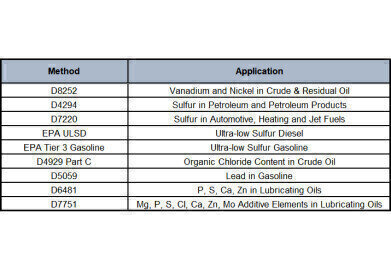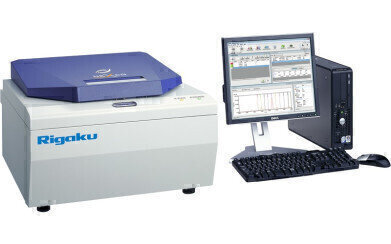Elemental analysis
Advanced Cartesian Geometry EDXRF for Rapid Elemental Analysis
Mar 18 2020
Energy Dispersive X-ray Fluorescence (EDXRF) is an analytical technique employed by the petroleum industry for materials characterisation and elemental analysis at every stage of the exploration, production and distribution process. It is effective for rapid qualitative and quantitative elemental analysis of chlorine, lead, sulfur and metals in crude, oils, gasoline, fuels, lubricants and waste materials.
Applied Rigaku Technologies, Inc. specialises in designing and manufacturing benchtop EDXRF spectrometers for elemental analysis applications as well as on-line real-time process control elemental analysers for production environments. The systems are elemental analysis tools of choice for measurements of ultra-low sulfur in fuels, inorganic chlorides and in crude oil, nickel and vanadium in crude and residual oils, lead in gasoline, lube oil additives and scale analysis.
As a multi-purpose, high-performance elemental analyser, the Rigaku NEX CG Cartesian geometry EDXRF spectrometer delivers elemental measurements across a diverse range of matrices — from homogeneous, low viscosity liquids to solids, metals, slurries, powders, pastes and thin films. Especially well-suited to the semi-quantitative determination of elemental content in unknown samples, the superior analytical power, flexibility and ease-of-use of the Rigaku NEX CG spectrometer add to its broad appeal.
Using 90â° Cartesian geometry polarisation monochromatic EDXRF gives the NEX CG analyser superior performance for critical measurements in the petroleum industry, in compliance with numerous ASTM methods and US EPA requirements*, making it an ideal choice as an all-in-one analyser.
*See Table 1: ASTM and EPA method compliance for NEX CG
Cartesian geometry for trace level sensitivity
Unlike conventional EDXRF analysers, the NEX CG instrument was engineered with a unique close-coupled Cartesian geometry (CG) optical kernel that dramatically increases signal-to-noise. Cartesian geometry monochromatic and polarised excitation from secondary targets, vastly improves detection limits for elements in highly scattering matrices like water, hydrocarbons, and biological materials. The resulting dramatic reduction in background noise, and simultaneous increase in element peaks, enables routine trace element analysis even in difficult sample types.
Up to five secondary targets cover the complete elemental range (Na – U) with optimised sensitivity. Excitation is provided by a close-coupled 50 watt Pd-anode end-window X-ray tube. For maximum stability, the tube is fitted with a shutter so that the tube may remain on at all times for maximum stability and durability.
Novel software reduces the need for standards
The NEX CG analyser is powered by RPF-SQX, a new analytical software which features Rigaku Profile Fitting (RPF) technology. The software allows semi-quantitative analysis of almost all sample types without standards — and rigorous quantitative analysis with standards. Rigaku NEX CG software was developed to be both extraordinarily powerful and extremely easy to use. Ideal for non-technical operators, routine analyses are performed through a simplified customizable “EZ Analysis” interface.
The EDXRF analytical technique is simple enough for use by non-technical operators, yet powerful enough for expert use in the research & development of new lube oil formulations. The Rigaku NEX CG benchtop EDXRF analyser offers a fast, simple means for analysing lube oils for metallic composition.
Digital Edition
PIN 26.1 Feb/Mar 2025
March 2025
Analytical Instrumentation - Elemental Analysis for Quality and Process Control at Refineries, for Lubricants and Wear Metals in Engine Oils - Synthetic Lubricants: New Developments - Scaling...
View all digital editions
Events
Apr 08 2025 Birmingham, UK
Apr 08 2025 Kielce, Poland
Apr 08 2025 Ravenna, Italy
Apr 08 2025 Southampton, UK
Apr 08 2025 London, UK

_picture_2018.11.14.jpg)

_picture_2018.11.14.jpg)




















